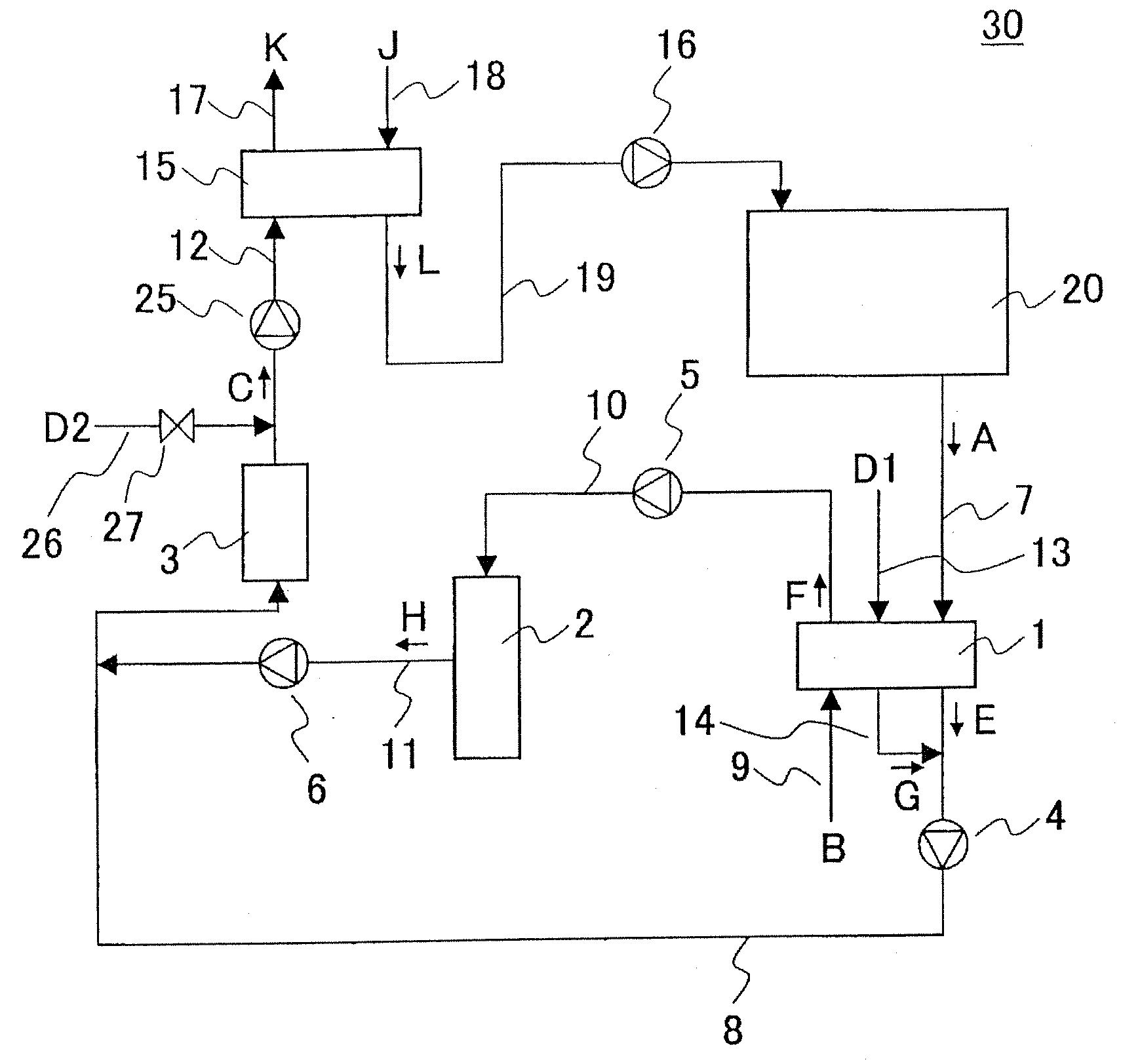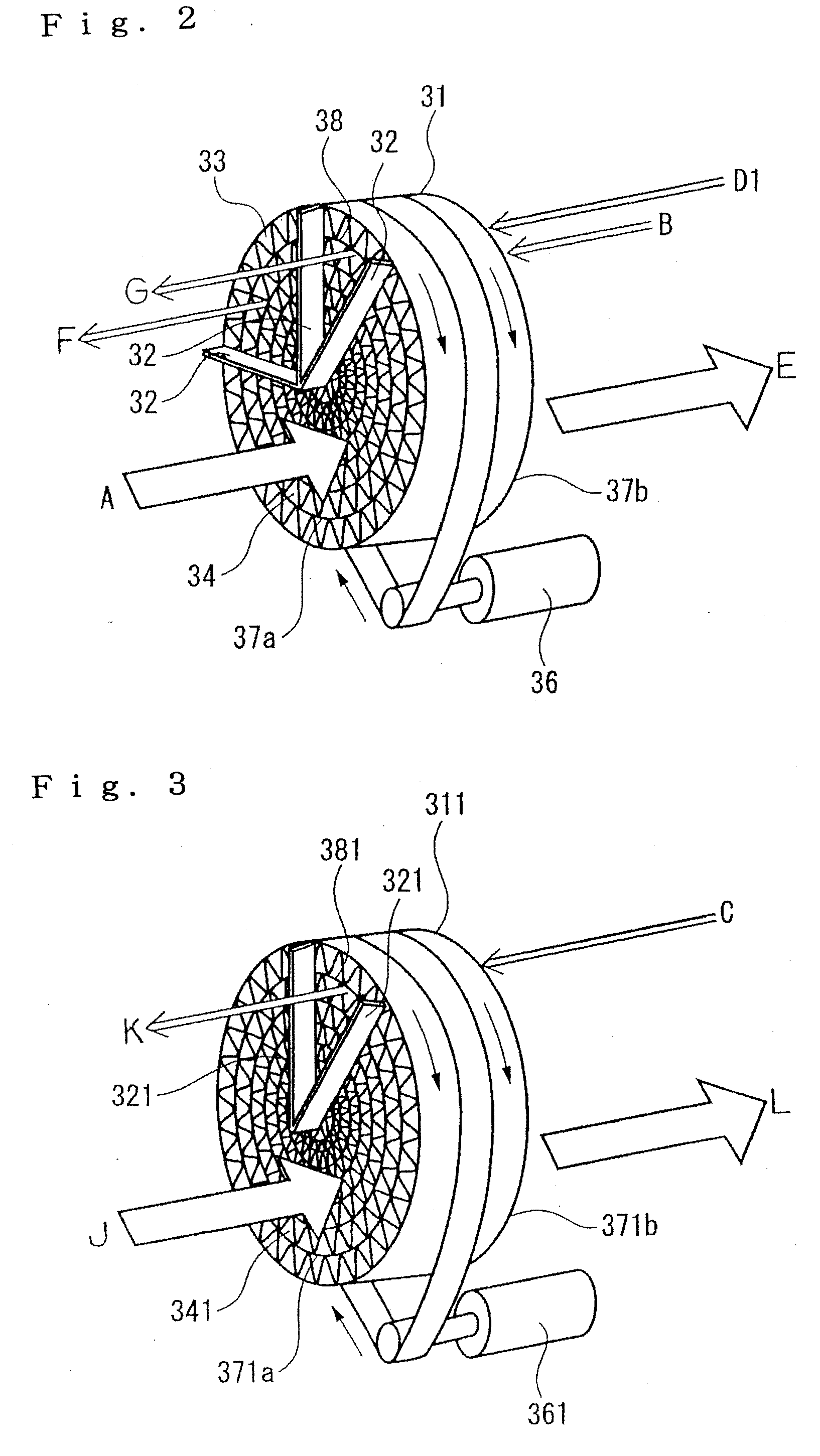Method for processing organic solvent-containing air
a technology of organic solvent and air, which is applied in the direction of organic chemistry, separation process, dispersed particle separation, etc., can solve the problems of oxidation catalyst exposed to a high temperature, oxidation catalyst performance decline, and enormous heat generation, and achieve the effect of increasing high thermal efficiency
- Summary
- Abstract
- Description
- Claims
- Application Information
AI Technical Summary
Benefits of technology
Problems solved by technology
Method used
Image
Examples
example 1
[0050]An organic solvent-containing air was processed using the organic solvent-containing air processing system shown in FIG. 4 under the conditions shown in Table 1, provided that installation of the production plant 20 was omitted and an air of which the content of organic solvents was adjusted was directly introduced as the air A to be processed into the pipe 7 for supplying air to be processed. The results are shown in Table 2.
[0051]Adsorber 1[0052]Carrier: A rotor-shaped honeycomb structural carrier with a diameter of 400 mm and a length in the air-flow direction of 400 mm, made from silica-alumina fiber paper (thickness: 0.2 mm, void ratio: 90%) was prepared.[0053]Supported adsorbent: ZSM-5 zeolite (composition: Al0.64Si95.36O192)[0054]Ratio of adsorption zone, regeneration zone, and purge zone: 3:1:1
[0055]Combustion furnace 2[0056]Packed catalyst: Cordierite-supported platinum catalyst[0057]Packed bed: diameter: 0.5 m, length: 1 m
[0058]Oxidation-decomposition filter 3[0059]P...
PUM
| Property | Measurement | Unit |
|---|---|---|
| operating temperature | aaaaa | aaaaa |
| temperature | aaaaa | aaaaa |
| temperature | aaaaa | aaaaa |
Abstract
Description
Claims
Application Information
 Login to View More
Login to View More - R&D
- Intellectual Property
- Life Sciences
- Materials
- Tech Scout
- Unparalleled Data Quality
- Higher Quality Content
- 60% Fewer Hallucinations
Browse by: Latest US Patents, China's latest patents, Technical Efficacy Thesaurus, Application Domain, Technology Topic, Popular Technical Reports.
© 2025 PatSnap. All rights reserved.Legal|Privacy policy|Modern Slavery Act Transparency Statement|Sitemap|About US| Contact US: help@patsnap.com



